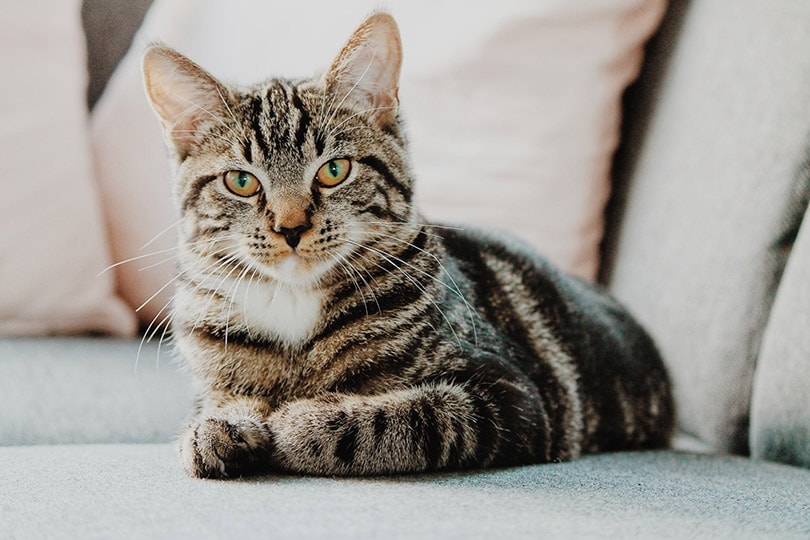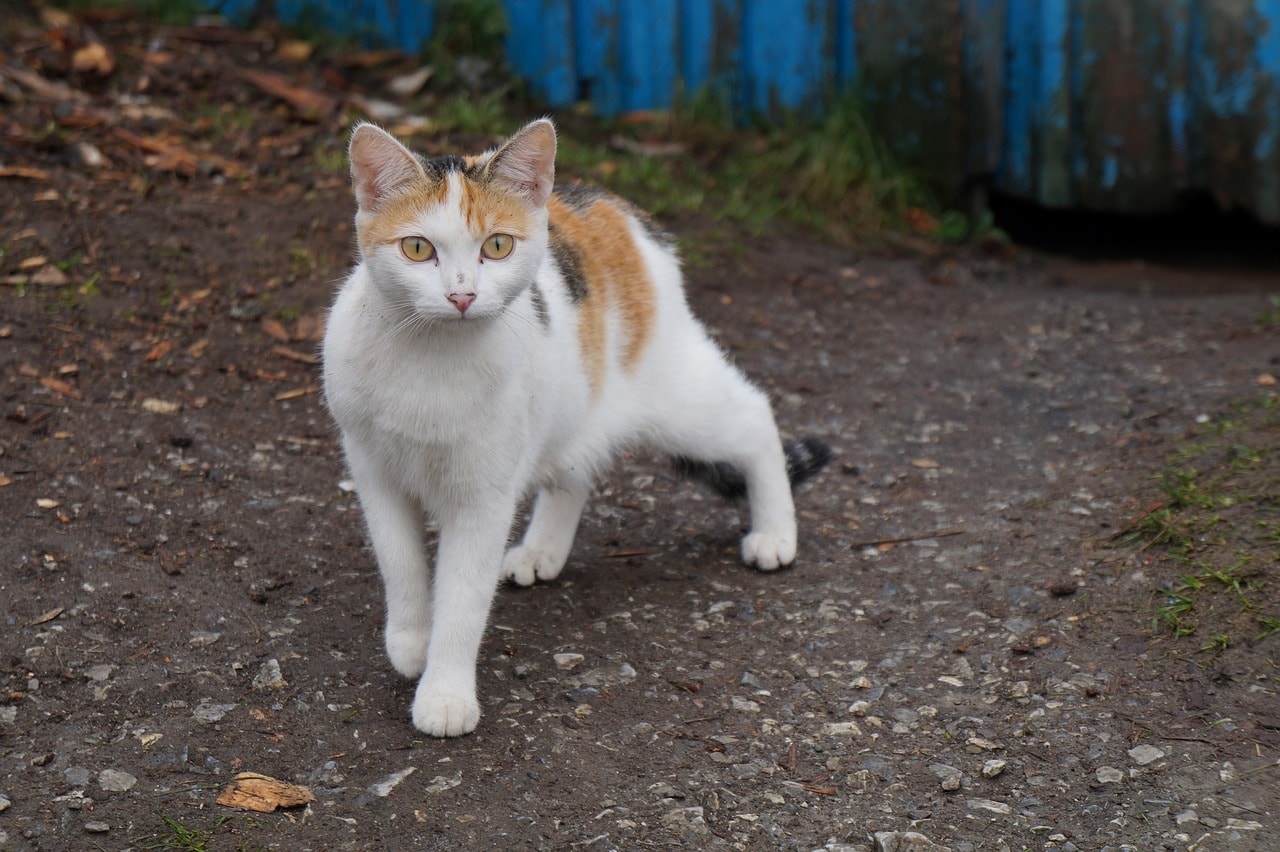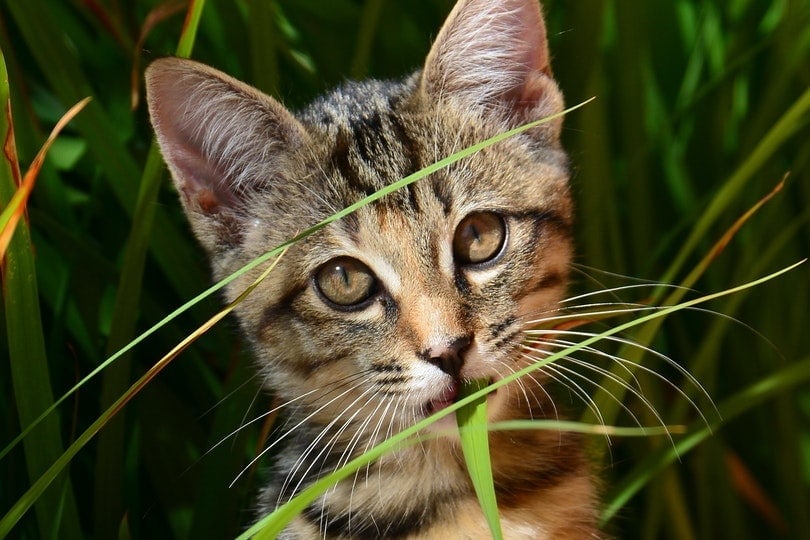Cats, unfortunately, commonly cause allergies in their human companions. Having a cat allergy can take the joy out of owning a cat, as you may be suffering from sinus issues, congestion, and watery eyes.
When most of us think of a cat allergy, we assume the cat’s fur and dander is the main reason behind our allergy symptoms. However, there’s another reason behind the cause of cat allergies, and it mainly comes from your cat’s saliva which is transferred to their fur during regular grooming.
Is it possible that a genetic component can be the cause of your ongoing cat allergies? Read on below to find out!
What Makes People Allergic To Cats?
The main allergen primarily responsible for cat allergy symptoms is Fel d1, which is a secretoglobin. However, there are at least eight different cat proteins that can cause allergies, and it’s also possible to be allergic to the dander and dead skin shed by cats.
All cats produce Fel d1, but the hormonal status determines the amount produced in the cat. It has been shown that male cats produce more Fel d1 than female cats, however, but neutered cats produce significantly less Fel d1 than non-neutered male cats. Interestingly, both intact and spayed female cats produce similar levels of Fel d1.
Fel d1 is a protein found in the saliva, anal, and sebaceous glands, skin, and fur of cats and it’s now a recognized allergen. It has also been discovered that a cat lipocalin allergen—Fel d4—has been identified as another possible allergen that contributes to cat allergies in humans.
This protein is spread around the cat’s fur when they groom themselves, so it is very difficult to eliminate this protein from the environment. Fel d1 can be transferred to your clothing, furniture, and other household surfaces, where it will be difficult to remove. You cannot combat your cat allergies by simply washing your cat regularly, as this may only minimize the protein for a short time. Plus, it will not benefit your cat much as regular washes will strip your cat’s fur of natural oils. Licking is your cat’s preferred method of cleaning itself and it is a behavior that cannot be changed.

What Gene Causes Cat Allergies?
There are two genes (Ch1 and Ch2) that make the Fel d1 protein, which is the most common cause of cat allergies. People who are allergic to this protein react by creating immunoglobulin antibodies which induce mast cells to produce histamine and other chemicals that result in congestion, sneezing, and itching.
Interestingly, people are not born with cat allergies. Instead, these patients have a genetic tendency and risk factors that increase their chances of becoming sensitized to a particular allergen. In the case of cat allergies, Fel d1 and d4 are the main contributors.
Genetics certainly seems to have a role in the development of cat allergies. This means that you are more likely to experience specific allergies if you have family members who are also allergic. Our immune systems make antibodies that fight substances that might harm your body. In a person who has allergies, the immune system mistakes an allergen for something harmful, causing your body to make antibodies to fight off the allergen.

Do All Cat Breeds Cause Allergies?
It is believed that female cats produce much less Fel d1 than male cats do and that the higher production of this protein can be limited by neutering a male cat. Light-colored cats also produce less of this protein in comparison to dark-colored cats, and cats with long fur give off less of this allergen into the environment than short-haired cats, mainly because their fur is better at holding the protein against their skin.
In theory, a light-colored female cat might be less allergenic, but this is not always the case as the Fel d1 production in cats can vary regardless of their gender and coloration.
Hypoallergenic cat breeds are labeled as ‘hypoallergenic’ because they produce and secrete significantly less Fel d1 than other cat breeds. However, if you are suffering from extreme allergies, a hypoallergenic cat may still contribute to many of the symptoms you are feeling.
Hairless cats (also known as the Sphynx) may be a good cat breed to consider if you are allergic to the Fel d1 protein shed from cats with fur. These cats have much less of this protein covering their bodies because they will not groom as regularly. However, this protein is still present in their saliva and other sebaceous glands.
Final Thoughts
Certain genetic components can cause you to develop allergies towards cats. Whether it be from the dander or shed fur, or from the different proteins (Fel d1 and d4) that coat their fur, skin. All cats carry Fel d1 in their genes, and if you have Ch1 and Ch2 in your genes, you are more likely to develop allergies towards cats if your body begins to see these proteins as a harmful substance to your body.
If you only suffer from mild allergies towards cats that can be treated, then owning a hypoallergenic cat breed or hairless (Sphynx) cat breed may be a good choice.
Featured Image Credit: Elizaveta Galitckaia, Shutterstock






